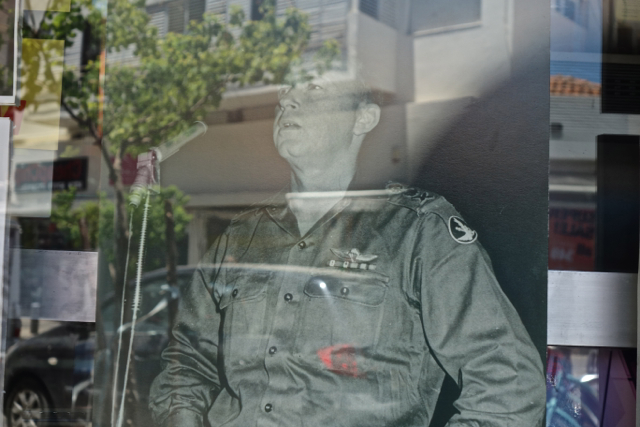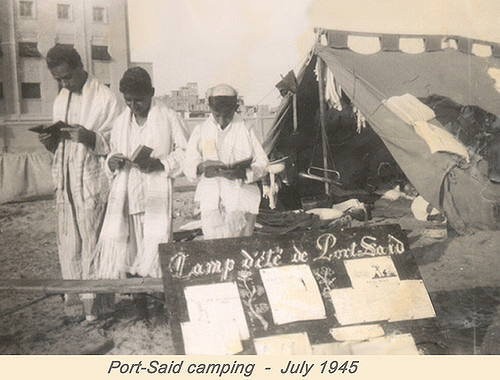September 13th, 2013 marks the 20th anniversary of the now-infamous Oslo Accords. Friday the 13th seems all too appropriate a date for that landmark. What better a marker for an agreement that started with good intentions, but was doomed by its inherent flaws and malicious politics.
This year, Oslo’s birthday also coincides with the eve of the holiest day of the Jewish calendar, Yom Kippur. Once again, an appropriate bit of happenstance, as not only Israel but the activists who back it so fanatically that they are often more extreme than the most radical settlers, have much to atone for. The Oslo Accords depended on the desire of both sides to make sacrifices for peace, completely ignoring the different levels of motivation for such acts between an occupied and stateless people, and a regional superpower whose best friend is the preeminent global superpower.
It’s easy to lament, as so many have in the past few days, the failure of Oslo. It’s not as simple to look hard at the system it created and how that has had the opposite effect of many of the Accords’ ostensible intentions. In the end, despite a few breakthroughs, such as Israel recognizing the Palestinian people’s existence as a people, Oslo was a peace agreement that made peace a lot harder to ever attain.
Some believe that Oslo was, from the outset, an Israeli-American trap for the Palestinians. In thinking of that question, we must differentiate between the initial effort by Israeli and Palestinian negotiators in Oslo, Norway in 1992 and 1993 and the finalization of the final piece of the Oslo Accords, which was called the Interim Agreement or Oslo II in 1995. Those first secret talks, I believe, were a sincere effort to create a true peace process. Many mistakes were made, some of them serious moral ones (the most prominent being the lack of a human rights framework,) but the effort was sincere.
The subsequent documents, though, were of a very different breed. Ironically, while the Palestinians got some measure of self-rule for the first time, it was that very fact that served to imprison them even further. The division of the Occupied Territories into the now well-known Areas A, B, and C had the effect of severely curtailing Palestinian movement. That had a devastating effect on the Palestinian economy, which was quite weak before Oslo. But the illusion of even limited self-government made things even worse.
And illusion it was. In theory, Area A was supposed to be under both the administrative and security control of the Palestinians. But in reality, Israel has always conducted military and police operations in Area A, both routine and special. Israel also has always controlled the tax collection system, allowing them to cut off the chief source of Palestinian income whenever and as often as they wanted to. Israel is also the main market for Palestinian goods and it can inhibit Palestinian exports to other countries, giving it still more control. While there is, to be sure, some emotional value in Palestinians having at least some kind of National Authority, even that relatively meager boon has been eroded by the ever-growing perception of the PA as a collaborator with the Israeli occupation.
Consider what things were like before Oslo. Palestinians routinely moved between the West Bank and Gaza, in and out of Jerusalem and, yes, in and out of Israel. Many Palestinians worked in Israel, and the loss of those employment opportunities after Oslo was devastating; few jobs were created to replace them, and most of those that were created came from the PA itself, paid for by donations from Europe, the US and some of the Arab states. Before Oslo, Palestinian citizens of Israel could easily visit their families in the Occupied Territories. Many Israeli Jews, as well, regularly went to Ramallah, Nablus and Gaza City to shop, eat at restaurants and, yes, sometimes just to spend some time with their Palestinian friends.

After Oslo, all of that changed. The number of Palestinians working in Israel plunged sharply, movement became much more difficult, families became estranged despite being separated by only a few kilometers. Perhaps most importantly, the idea of “separation” became entrenched in the occupation. Palestinian and Israeli friends saw each other less and less, leading, quite naturally, to a greater distance and less empathy between the two peoples on the whole.
As time went on and various events – the second intifada, the Gaza withdrawal, the Fatah-Hamas fight over Gaza – shaped the landscape, the Palestinians became fragmented, both territorially and politically. This too was an outgrowth of Oslo. The territorial fragmentation was built in, while the political fragmentation arose from Fatah being the only party Israel and the United States were prepared to deal with. When the reality of elections eventually came up (more than a decade after the last ones) the result was not to the liking of the occupying power. The entire idea of building an independent Palestinian state under occupation was unworkable, and this played out in the Palestinians’ inability to reconcile its secular-nationalist and Islamist factions. The Palestinians, surely, must assume some responsibility for that, but the conditions of occupation created insurmountable barriers.
Oslo also served to greatly accelerate the settlement program. It should come as no surprise that the settler movement and their supporters within Israel (and the US) would respond to any sort of peace initiative by trying to create facts on the ground as quickly and broadly as possible. Yitzhak Rabin, the “Oslo Prime Minister” had a choice. He could either take on the settler movement, paving the way for increasing Palestinian autonomy and economic growth at the very least, but also unleashing the most gargantuan political battle Israel had ever seen; or he could appease the settlers by granting them more permits and more resources to build faster in the hope that they would voice their opposition to Oslo but otherwise allow the project to go on. Rabin chose the latter. One cannot know, of course, what would have happened if he had chosen to confront the settlers and expansionists. It might well have mooted Oslo altogether. We do know the results of his choice, and they were massive settlement expansion, a vastly increased spider web of Israelis-only roads, much greater water deprivation for the Palestinians and a far greater military and police presence than had previously been necessary.
There can and will be endless academic debates over whether the Israeli negotiators in Oslo twenty years ago intended some sort of outcome like this. I don’t believe it, but we can never know for certain. There will be similar disagreements over whether the PLO negotiators were really interested in a free Palestine, desired to advance the imagined program of “throwing the Jews into the sea” or were simply serving venal self-interest. I believe they genuinely thought they were negotiating toward a Palestinian state, but, again, we’re not likely to ever know for certain. Such is the way of motivations.
The result of Oslo’s failure has generally been taken to mean that a two-state solution is impossible. While it certainly does give a lot of impetus to one-state solutions from all sectors, both Israeli and Palestinian, it does not moot two states. What it does is highlight the need to revise our thinking and consider new possibilities rather than repeatedly trying to fit the square peg of Oslo into the round hole of reality. We should be open to considering any possibility that can work, with however many states. Working means considering Palestinian security equally important as Israeli; it means a vision that embraces equal rights for all involved, Israeli and Palestinian; it means recognizing that all settlements are illegal and any that Israel keeps must be by the negotiated good graces of the Palestinians; it means that maintaining Israel as a safe haven for Jews everywhere fleeing anti-Semitism not necessitate that every Jew worldwide has Israeli citizenship as her or his birthright; and that the rights of Palestinian refugees must be addressed. All of that can be done in either one or two state formulations, as I have frequently argued.
Most of all, Oslo’s failure has to force us all to confront myths that have undermined it and would undermine any other diplomatic process. Chief among these myths is the absurd one that “peace can only be reached through bilateral negotiations between the parties.” That is one road that surely cannot lead to peace. Ultimately the inequality between Israel and the Palestinians will always make it impossible because Israel does not have anything close to sufficient incentive to make the major compromises it would have to make to meet even minimal Palestinian demands.
Indeed, Oslo makes this idea even more absurd than it was before. The past twenty years have seen a major decline in every measure for the Palestinians. But, while Israel hasn’t exactly had a picnic the whole time, look at where it is now. Since the end of the Second Intifada, violence against Israelis has sharply declined compared to any period in its history. The situation has been so quiet that for the first time since the occupation began, it was almost a non-issue in the Israeli elections. Israel’s economy has its problems, but compared to the US and many European countries, let alone the rest of the world, it is much healthier. Europe, the US and the Gulf countries bankroll the occupation and the PA provides West Bank security, while Hamas has generally restrained both itself and other factions in Gaza. Absent outside pressure, Israel has every reason to try to maintain the status quo as closely as possible.
Oslo was, I believe, born of good intentions, inspired by the First Intifada and capitalizing on a political moment where the Cold War had recently ended and one US President needed to push Israel towards peace after his Iraq War and his successor was more than happy to embrace the photo op that September 13, 1993 afforded him on the White House lawn. But some bad decisions that looked a lot better at the time, subsequent events and the changing political landscape magnified the mistakes that were woven into the Accords from the beginning. Those were the Friday the 13th moments.
Later, the increasing influence of settlers; an Israeli public that was convinced by their Prime Minister and the US President in 2000 that the Palestinians had been the sole cause for the failure of what was supposed to be the promised summit of Oslo leading to a Palestinian state; mutual violence which terrorized Israelis and devastated the Palestinians; and increasing cynicism, anger and mistrust have destroyed most of the hope that Oslo did undeniably bring to many. Those are some very worthy things to both reflect on and atone for on this Yom Kippur.
Photographs courtesy of Joel Schalit





